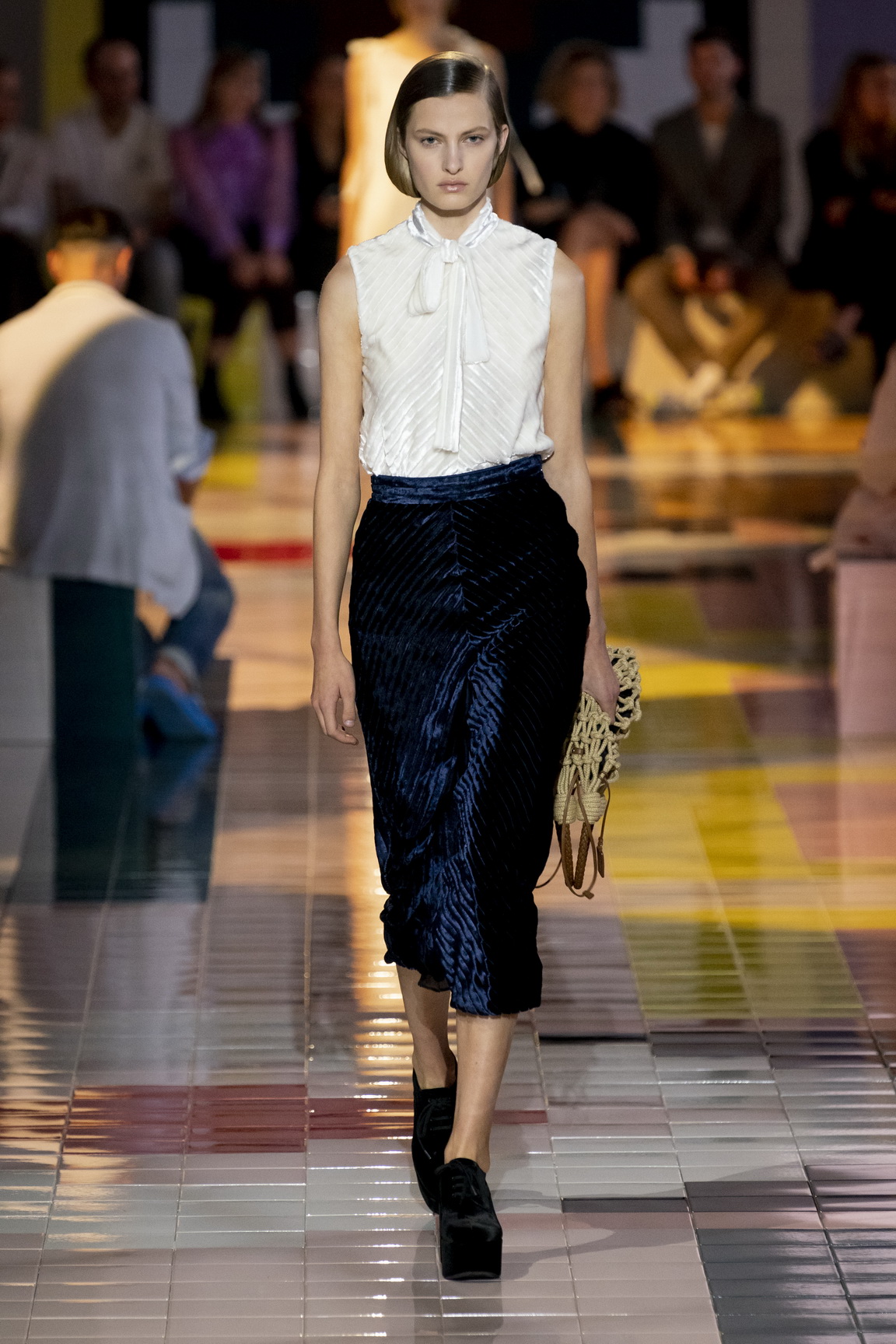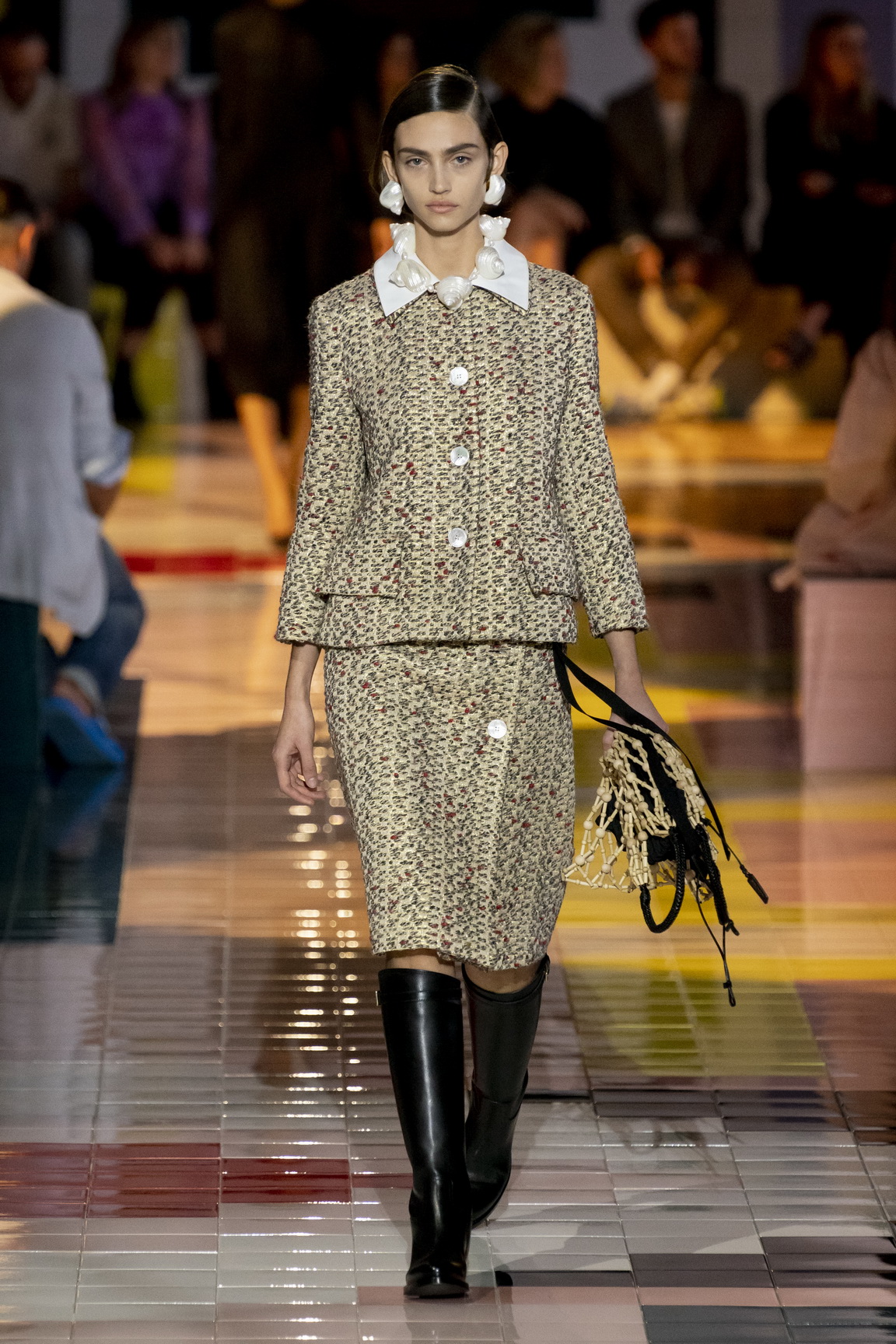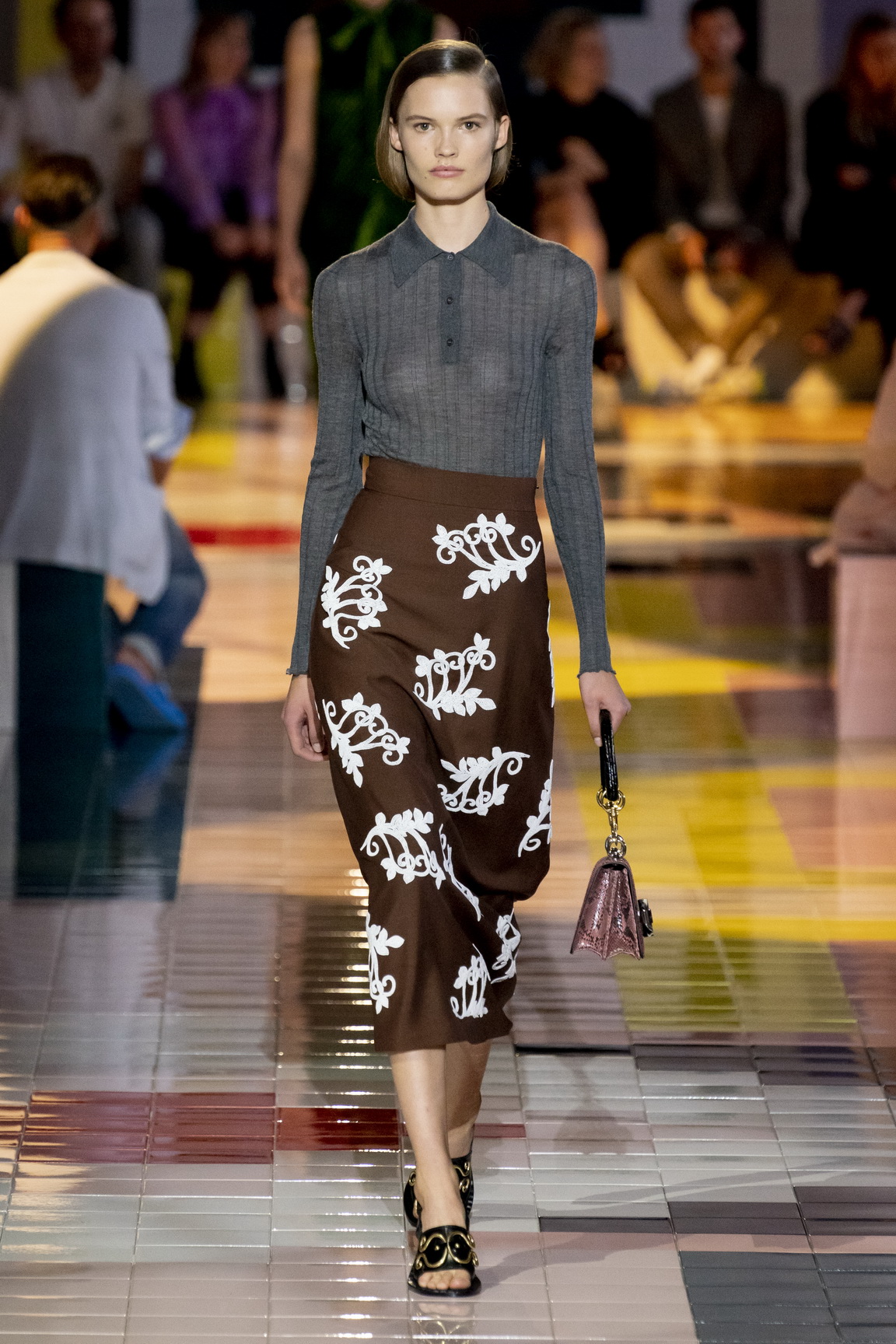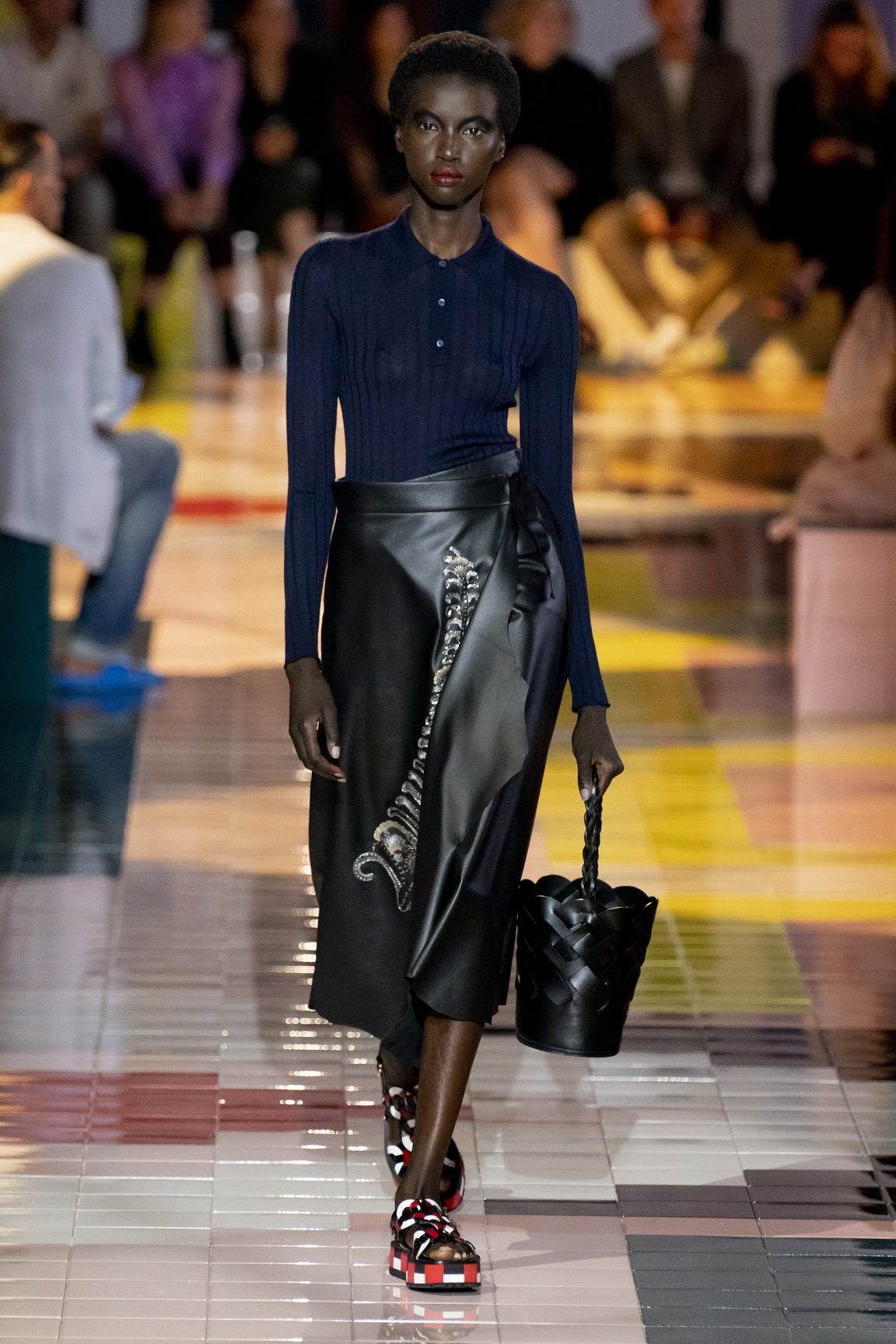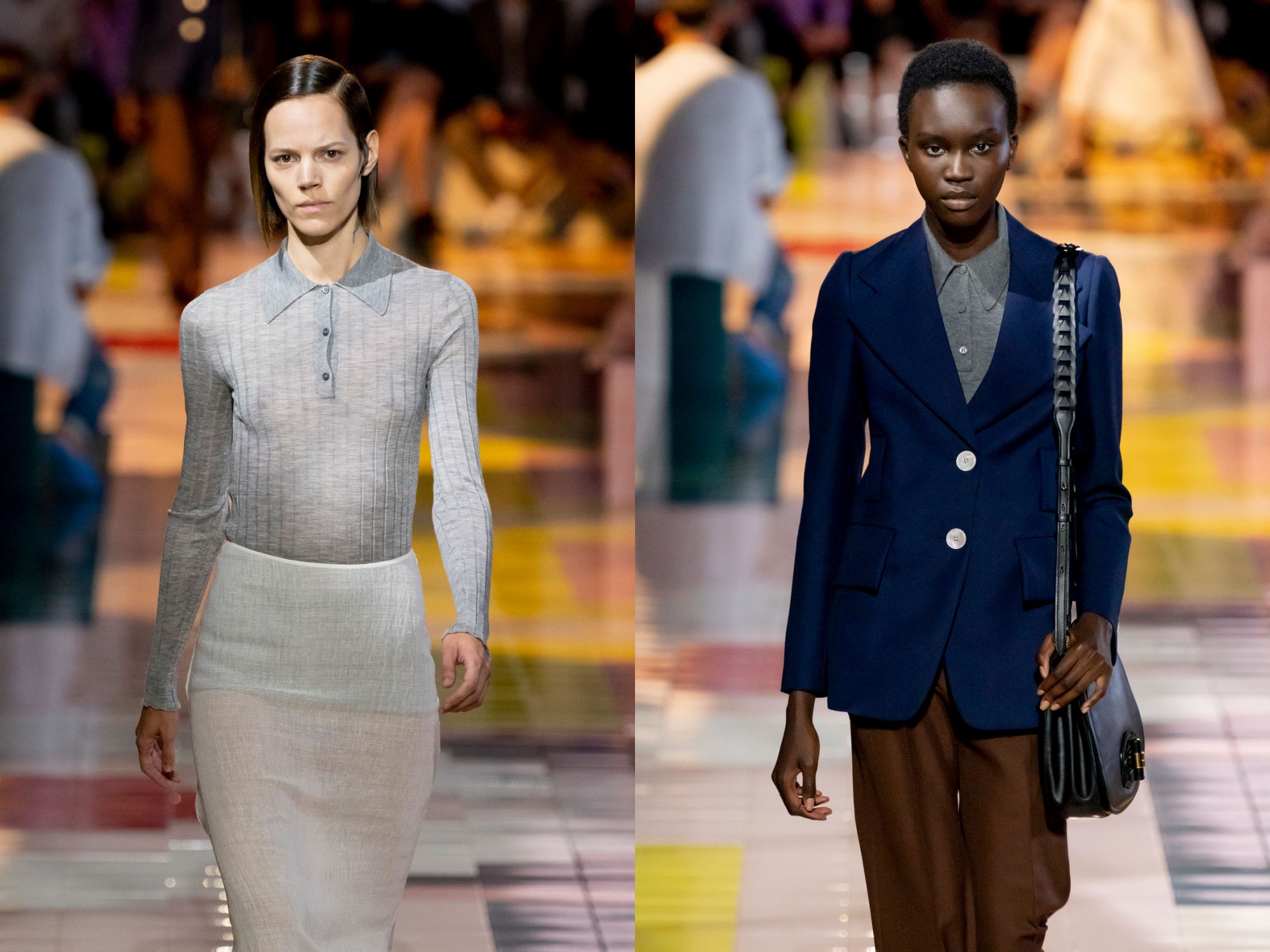Miuccia Prada was thinking about simplicity this season as a direct riposte to fashion’s excessive waste and the increasingly short life cycle of clothes that end up in landfills. She said that she was interested in style — not fashion — as she set out to dress the person and create clothes that would last forever and frame the wearer. “In this moment where there is excess and too much, and everybody is complaining that there’s too much fashion, too much clothes — I tried to work so that the person is more important than the clothes and the fashion,” she explained after the show. “On one side, we want to save the planet and not consume and not spend, but then people won’t have jobs, they won’t have money, and then we’ll have to sell more again,” she added. “It’s a giant political problem that everyone needs to address in their own way and through their own efforts.”
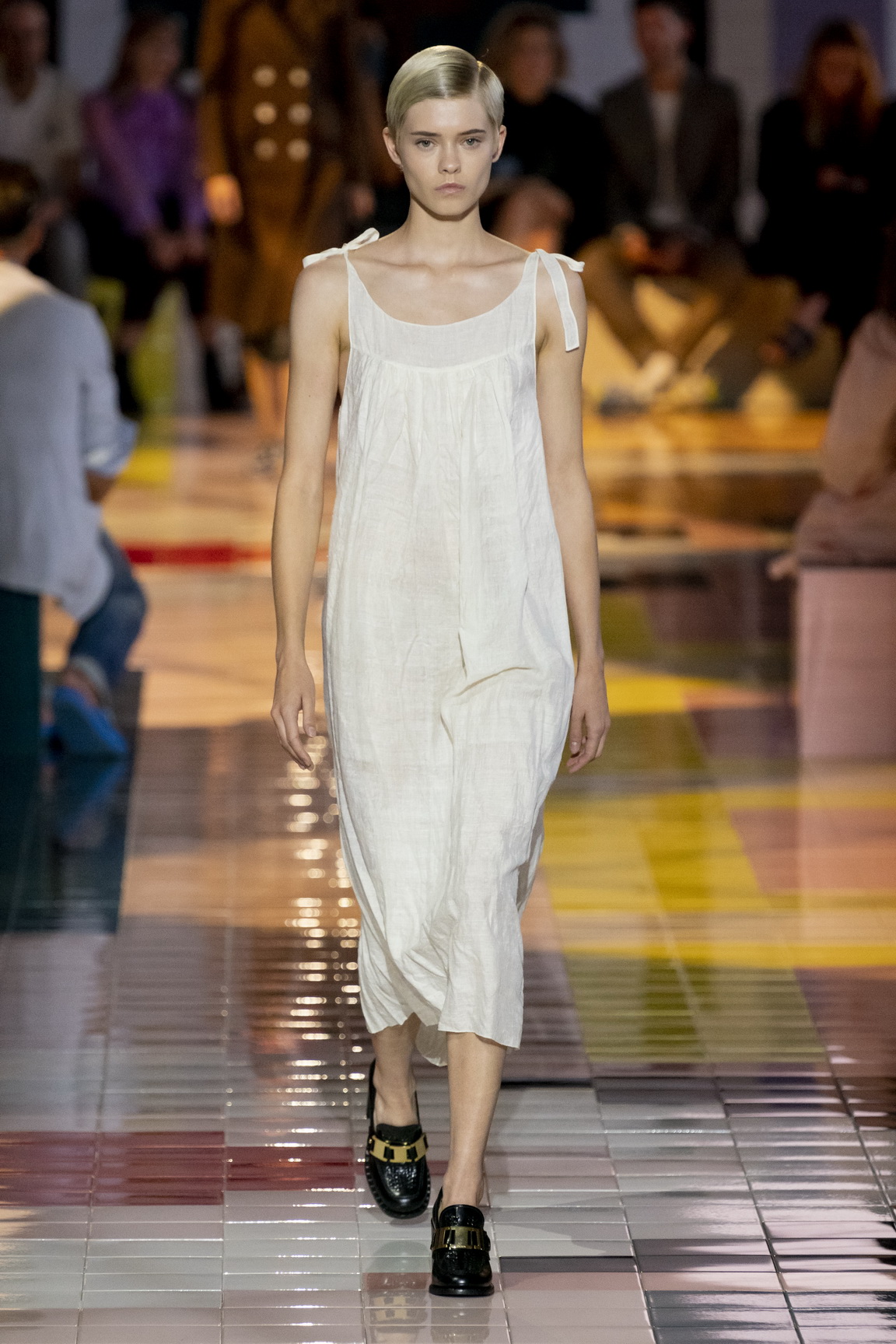
How does Mrs Prada rally against the disposable consumerism and sustainable fashion paradox? “It’s about going back to simplicity — not disposability,” she explained. So Freja Beha Erichsen opened the show in a grey ribbed-knit cashmere polo tucked into a raw silk gauze skirt that Mrs Prada said was her favourite look (her own uniform is usually a skirt-sweater combo) and which perfectly captured the mood of the collection, which followed suit — plenty of those, by the way — with straightforward clothes symbolically upcycled from the hallmarks of the 20s, 50s, 70s and 90s.
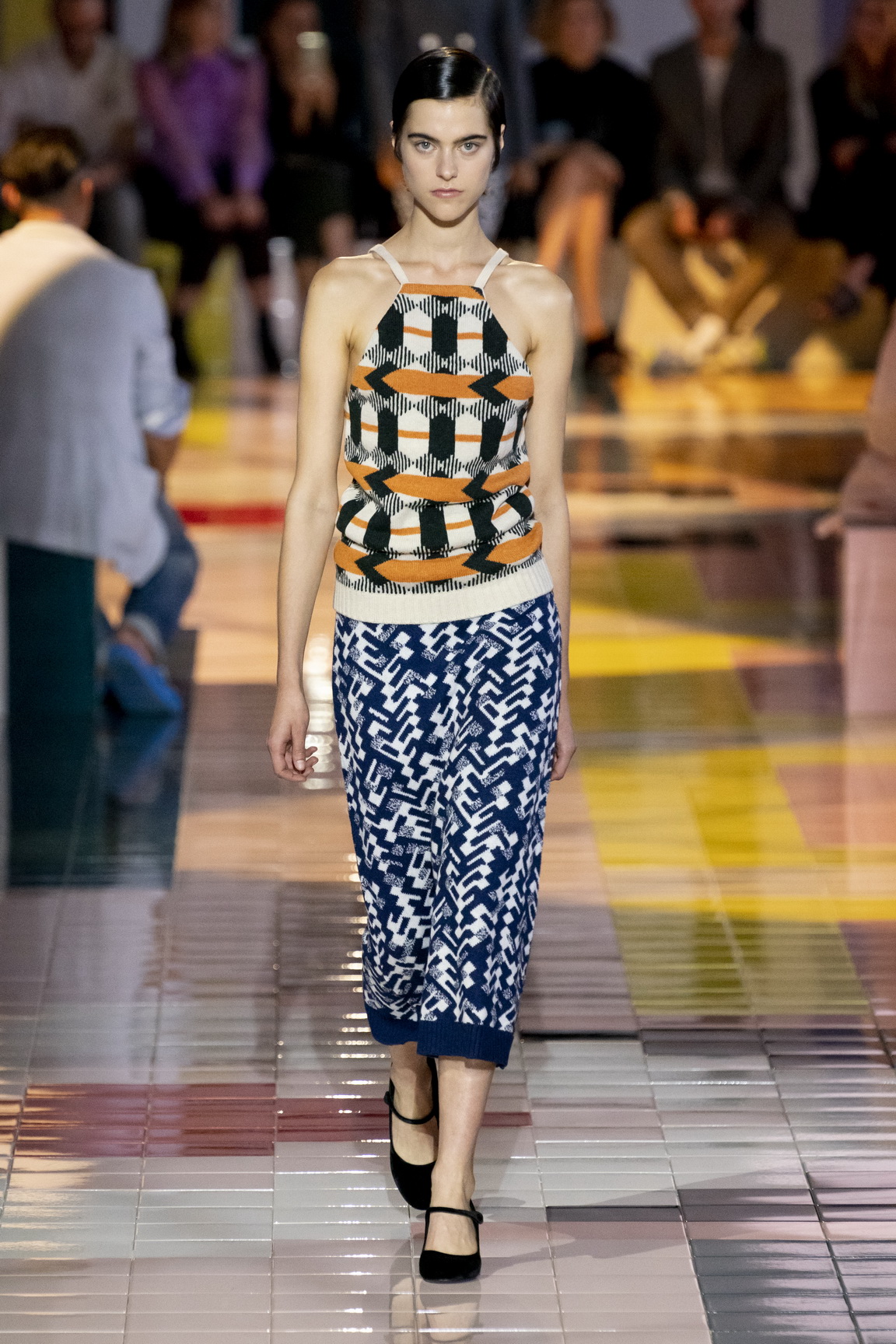
The set was a medley of summery terrazzo tiles in sherbet hues — “people walking on a summer terrace,” in Mrs P’s words — that was echoed in the collection amid an array of distinctly Prada hate-it-then-love-it browns. Texture was an important element as raw-edged silk gauzes, cosy geometric knits and cheesecloths were juxtaposed with polished suiting fabrics, sequined leaves and the occasional brocade. Interestingly, the show notes mentioned a buzzword for the season: directness. Here was Miuccia simplifying and purifying the essence of her house style. It needn’t be overwrought or conceptual, loud and graphic, emblazoned with the word itself. Instead, it can just be something candid and clear.
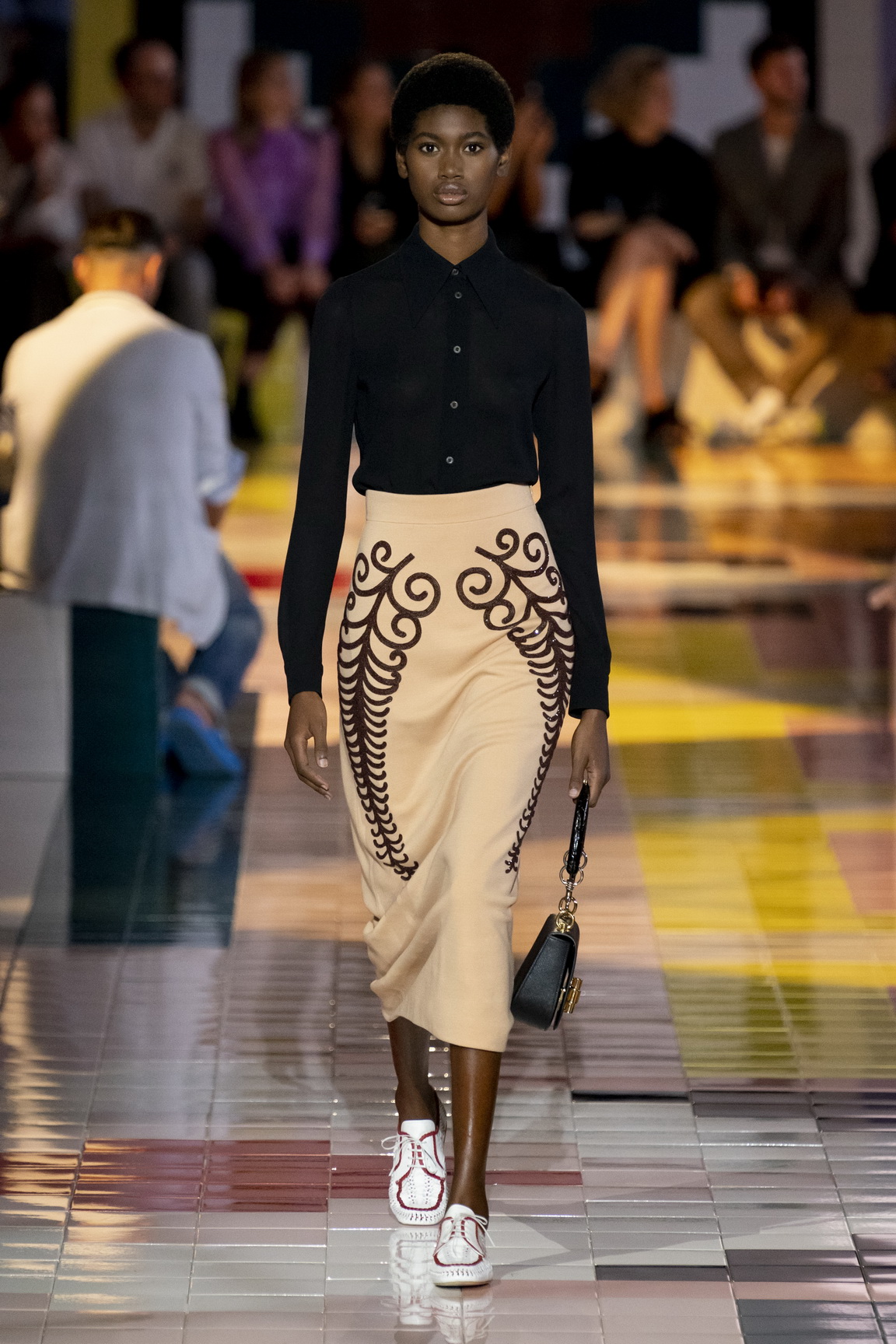
As fashion grapples with its environmental impact and voices like those of Greta Thunberg become a compelling clarion call for change, the mood is shifting and becoming reflected in the value places on clothes. In the last year alone, Prada has dramatically addressed its sustainability and ethical values. Not only has it banned fur from its collection, but this November will stage its third annual sustainability conference in New York. Hence the naivety of the shell jewellery and raw edges on leather pieces, python bucket hats and cheesecloth bibs, which the designer said she wanted it to feel “spontaneous”, as though you could do it yourself. For many kids, that may just be the case, whether through found objects or second-hand clothes. As far as radical acts of eco-consciousness go, that’s a sentiment that couldn’t be more relevant for right now.
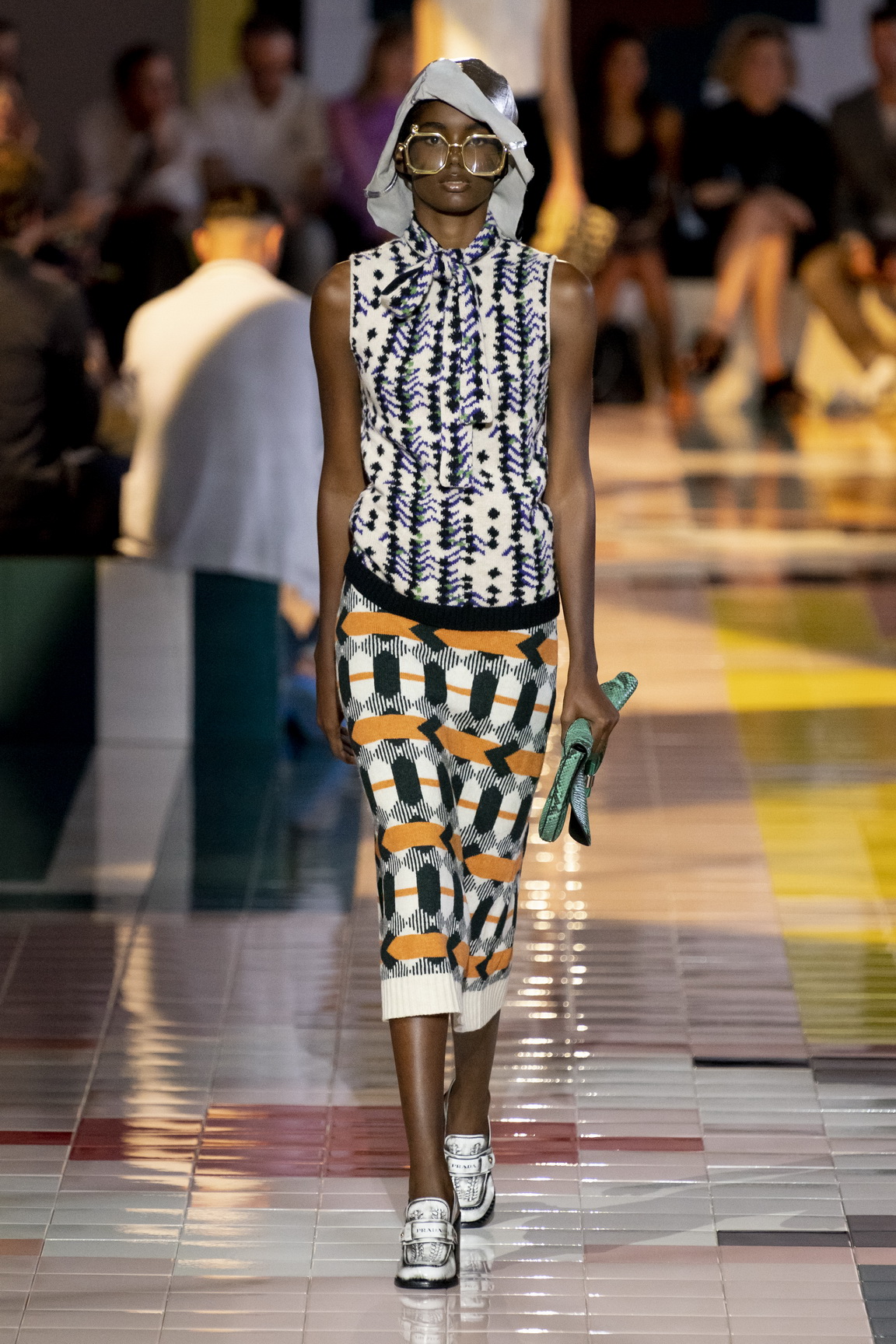
It also raised the question of why there is such a zeitgeist-y appetite for Prada’s 90s hits right now. Long before the Italian brand became a byword for opulence, it was synonymous with minimalistic stealth-wealth, leading a wave of 90s pared-back minimalism — the kind that is now referenced by young designers today and being snapped up on by fashion-savvy kids on eBay. It was the anti-logo luxury house, famous for its utilitarian nylon bags and restrained jolie laide elegance. This collection marked a return to that golden age, simple yet effective in reminding both diehard fans and more recent onlookers just what Prada stands for.
All photography Mitchell Sams
